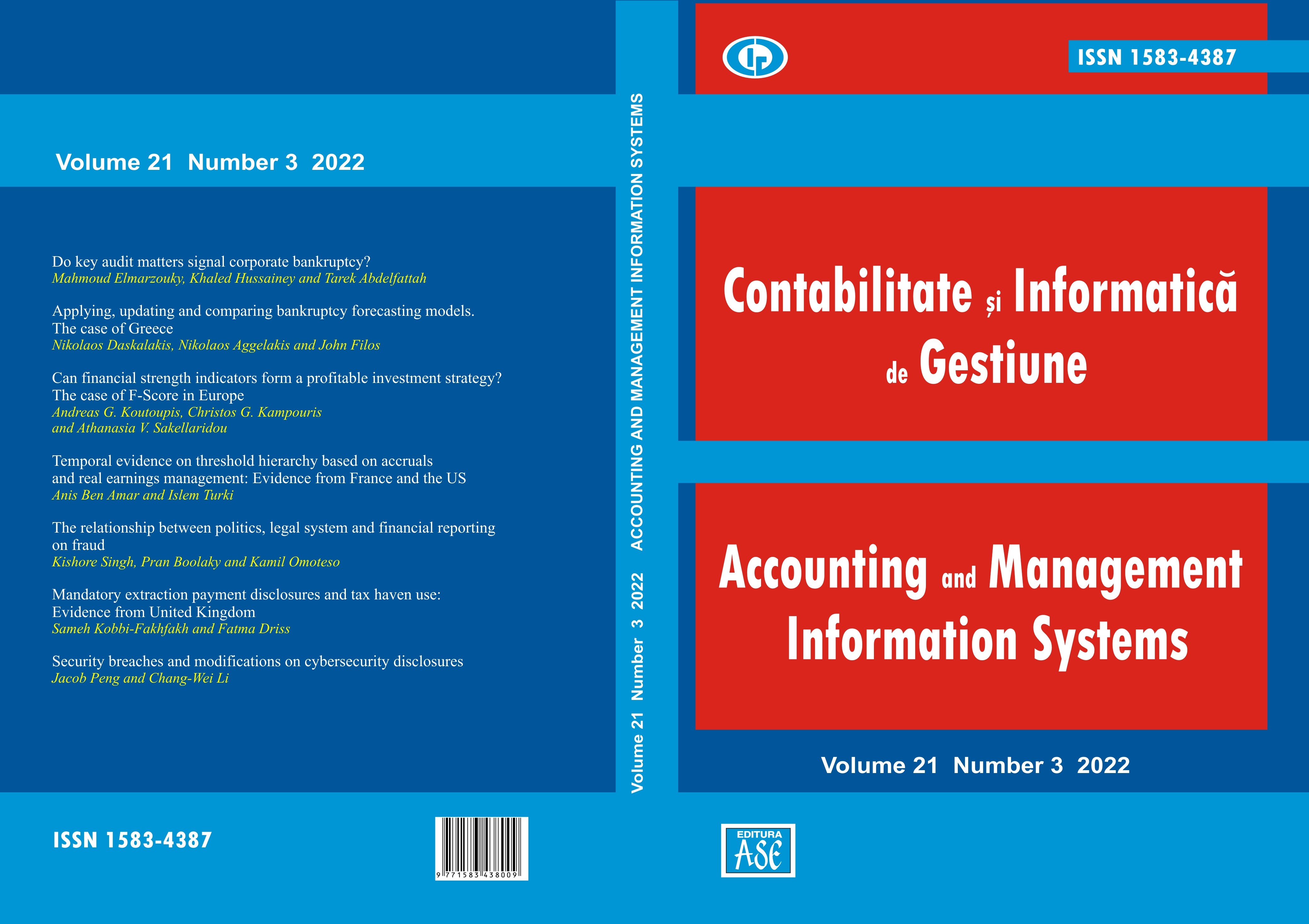Applying, updating and comparing bankruptcy forecasting models. The case of Greece
Applying, updating and comparing bankruptcy forecasting models. The case of Greece
Author(s): Nikolaos Daskalakis, Nikolaos Aggelakis, John FilosSubject(s): Economy, Business Economy / Management, Accounting - Business Administration, Business Ethics
Published by: EDITURA ASE
Keywords: bankruptcy prediction models, forecasting
Summary/Abstract: Research Question: This study examines whether bankruptcy prediction models work well during recessionary periods, on an advanced economy, and how their results can be improved, via a methodological approach to change the coefficients of their variables. Motivation: This is the first study to follow a methodological approach of a simultaneous comparison-update-comparison task, during a recessionary period, for an advanced economy. Idea: The paper explores, updates and compares the effectiveness of five of the most common bankruptcy prediction models on the listed companies of an advanced economy (Greece), covering the recessionary period of 2010-2019.Data: The study sample consists of Greek companies, listed in the Athens Stock Exchange, covering the period 2010-2019, classified into viable and non-viable, based on specific criteria. The final sample consists of fifty-two (52) companies, listed in the Athens Stock Exchange during the period from 2010 to 2019.Tools: We follow a two-stage analysis. First, we apply the original five bankruptcy prediction models of Altman (2000) and Grammatikos and Gloubos (1984), MDA and LPM models, Taffler (1983) and Dimitras et al. (1999) Next, we recalculate their coefficients, keeping the variables stable, and we again apply them to the same sample and compare them again.Findings: We find that the original models are significantly biased against viable companies, but predict with almost perfect accuracy non-viable companies’ bankruptcy. Once we update the variables’ coefficients, we get significantly improved results as regards correctly predicting viable companies, at the expense of slightly decreased, but still high, non-viable companies’ bankruptcy prediction rates. We suggest a similar methodology to be applied in other similar economies, to increase models’ accuracy.Contribution: The contribution of the paper is threefold. First, we show how we can develop highly accurate bankruptcy prediction models that can be applied in the economic environment of a developed economy. Second, we show that these models work well during recessionary periods as well, and can also be improved when their coefficients are changed. Third, we suggest a methodology of applying, comparing and updating such models, thus showing in detail this improvement process per model.
Journal: Journal of Accounting and Management Information Systems
- Issue Year: 21/2022
- Issue No: 3
- Page Range: 335-354
- Page Count: 20
- Language: English

